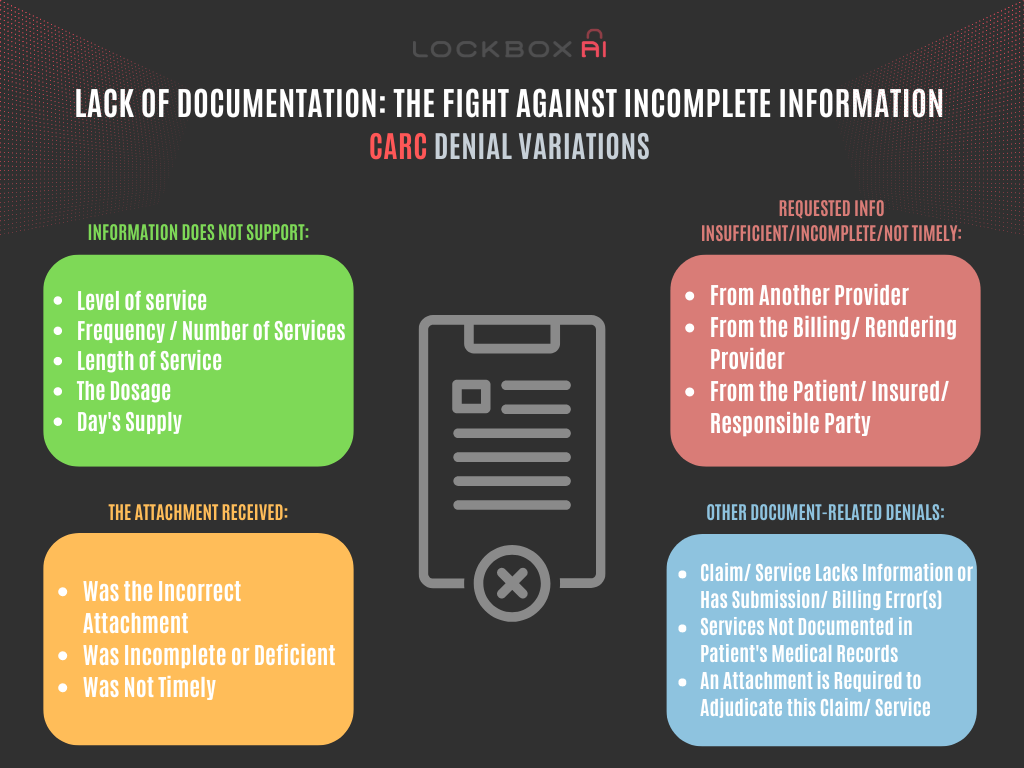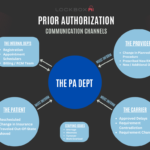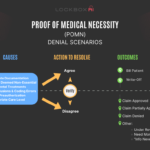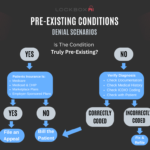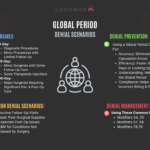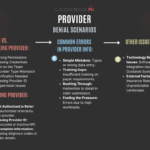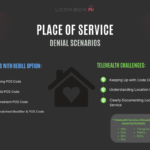Lack of Documentation: The Fight Against Incomplete Information
In an age where information is considered one of the most valuable assets, the absence or lack of documentation poses significant challenges across various sectors. Whether in business, academia, or public institutions, the fight against incomplete information is an ongoing battle that demands attention and proactive measures. We’ve all been there – the dreaded claim denial for “lack of documentation,” “unsupported documentation,” or the ever-so-vague “missing information.” For RCM directors, coders, and denial management teams, these denials can feel like a constant battle. Let’s delve into the specifics of this frustration and explore strategies to minimize these headaches.
Understanding the Problem
- The Importance of Documentation: Documentation serves as a cornerstone for knowledge preservation, communication, and decision-making. It provides a structured repository of information that facilitates learning, troubleshooting, and continuity.
- Common Causes of Lack of Documentation: Factors such as time constraints, negligence, lack of awareness, and technological limitations contribute to the prevalence of incomplete documentation. Additionally, organizational culture and priorities often dictate the level of emphasis placed on documentation efforts.
Common Services Vulnerable to Denials:
- Procedures Requiring Prior Authorization: Missing pre-authorizations are a major source of denials. Ensure all necessary approvals are obtained before service delivery.
- Services with Specific Documentation Requirements: Some procedures demand detailed progress notes, operative reports, or specific test results. Know these requirements and ensure thorough documentation by providers.
- New or Complex Procedures: New procedures might have evolving coding or documentation guidelines. Stay updated and document meticulously.
Preventing Denials from the Start:
- Pre-Service Verification: Double-check patient eligibility and benefits for coverage of the planned service.
- Clear Communication with Providers: Educate providers on documentation requirements for specific procedures and ensure proper coding based on the service delivered.
- Standardised Documentation Templates: Develop templates that prompt providers to capture all necessary information during patient encounters.
- Robust Auditing: Implement a system for pre-claim audits to identify potential documentation gaps before submission. This allows for real-time correction and reduces rework.
Consequences and Risks of Lack of Documentation
The ramifications of lack of documentation extend beyond mere inconvenience. They can result in costly errors, compromised decision-making, and erosion of trust among stakeholders. In industries where compliance and regulatory requirements are stringent, inadequate documentation can lead to legal liabilities and financial penalties. Moreover, incomplete information poses security risks, as gaps in documentation provide opportunities for malicious actors to exploit vulnerabilities.
When the Clinician Shoulders the Blame
Sadly, even with the best systems, sometimes the issue lies with the clinician’s documentation itself:
- Vague Documentation: Phrases like “patient stable” or “condition unchanged” offer little concrete support for coding and coverage determination.
- Nonspecific Terminology: Using broad terms such as “abnormal” or “lesion” without further clarification creates confusion and invites denials.
Examples:
- A progress note stating “patient continues to have abdominal pain” without specifying the severity, location, or any associated symptoms is insufficient.
- An operative report describing a surgical procedure as “the usual” fails to provide the detailed steps crucial for proper coding.
Unavoidable Denials (Even with Perfect Documentation):
- Insurance Policy Language: Certain services might be excluded by the patient’s specific plan, regardless of documentation.
- Coding Discrepancies: Sometimes, disagreements arise between the provider’s coding and the insurer’s interpretation. Appeal processes may be necessary.
- Data Entry Errors: While uncommon with proper protocols, even a simple typo in a diagnosis code could lead to denial.
Sharing the Agony, Not the Blame:
Claim denials are a shared frustration across the healthcare revenue cycle. Effective communication is key. Here’s how to manage the situation:
- Dedicated Staff: Divide and conquer by batching resubmissions by payer or type of service which provides predictability for easily repeated steps to resubmission with attachments..
- Data-Driven Strategies: Track denial trends and identify areas for improvement within your team or with providers with a focus on areas with more preventative potential.
- Open Communication with Providers: Address lack of documentation proactively. Run a report – for each provider – that shows total revenue value for claims denied for failed or weak documentation reasons.
Conclusion: The Inevitable Resubmission
Let’s be honest – some level of denials due to lack of information is an unfortunate reality. Payers will persistently deny a certain percentage of claims, requesting more information regardless of your best efforts. Denials of this nature may not be entirely avoidable, but with the right strategies, you can minimize their impact on your time and bottom line. The fight against lack of documentation is multifaceted, requiring a holistic approach that addresses cultural, technological, and procedural aspects.

